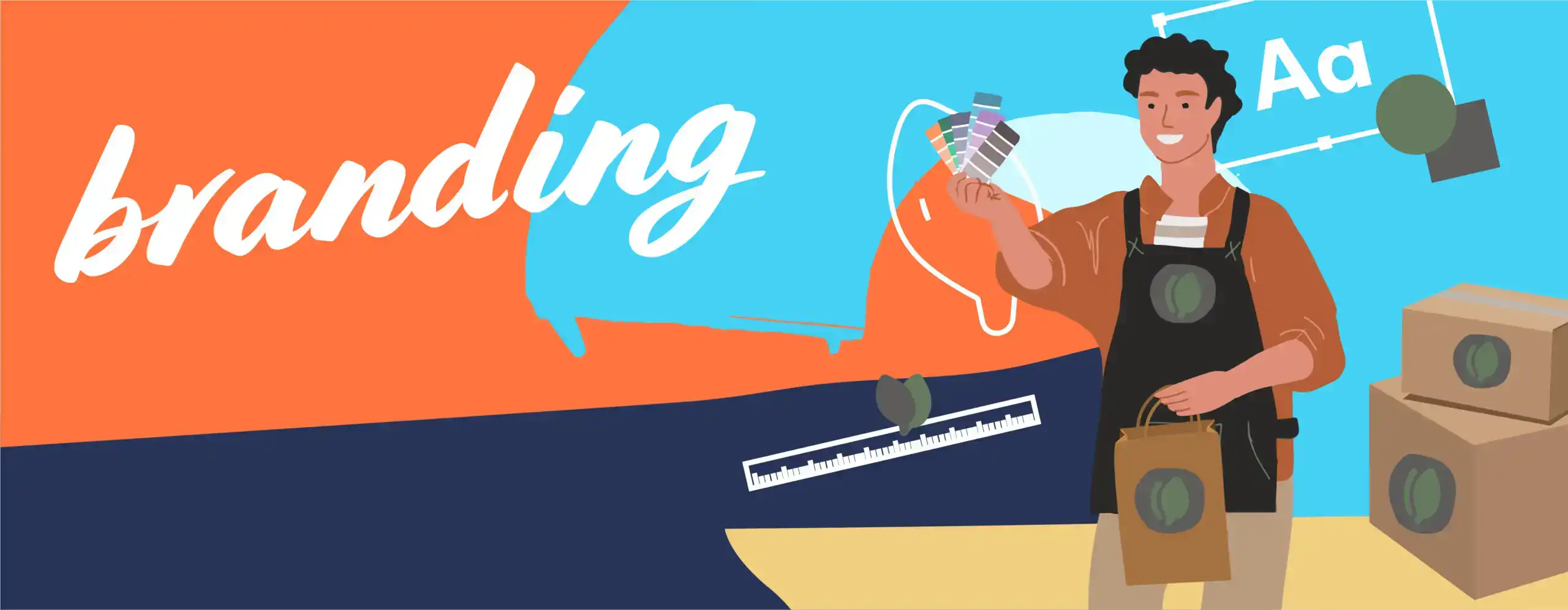Brand it better.
When it comes to the success of a business, good branding will ultimately take centre-stage with a major leading role. It’s no secret that, when you focus on brand awareness, you form an invaluable relationship and loyalty with customers, setting your business apart in a sea of great ideas.
As consumers we may look at branding in the general sense of names stamped on products and companies. However, branding is more than Nike, Apple, Pampers etc on a logo – its branches stretch much wider.
Similar to your business plan, your brand creates an identity that potential customers first interact with. As a business owner, the goal is to have a voice that speaks directly to your target customers.
Our brand story helps paint a clear picture of who we are, while setting an expectation for the quality of services and products customers will receive.
When shopping for a new pair of jeans, several factors will determine whether you decide on Fashion Nova vs Gucci. This decision-making power stems from both having a distinct brand.
However, let us not confuse branding with marketing. (They are separate branches grown from the same tree, so we get why you might.)
To put it simply, branding answers ‘who you are’ and ‘why you’re offering this’ whereas marketing answers ‘how do customers find out about you’, ‘where can they purchase’, and ‘what can be bought at what price’.
In short, Branding tells your story. Marketing breathes life into your story.
For the purpose of this blog, let’s focus on what exactly is a brand and why you need one.
Branding is defined by the American Marketing Association as the name, term, design, symbol, or any other feature that identifies one seller’s good or service as distinct from those other sellers. In reality, it is the combination of the features and the emotional connection developed that really defines a brand.
How are various brands of bottled water perceived? When you think about it, water is water. So what really influences your preferred choice? Is it the packaging? The portrayed company values? Is it simply pricing and accessibility? Whether we are aware of it or not, these are all factors that we consider when deciding which bottle makes it into our shopping basket.
Here we have the core areas that help develop our brand story:
- Logo– Keep it simple. Your logo should be easily read and adaptable to solid colour options, inclusive of white and black. Avoid distracting illustrations that shift focus from the brand’s name. A clear and readable font can be more effective without the extras.
- Brand Colours– Your colour choice should be intentional and align well with the industry and target customers. Gradients and textured effects like glitter for logos should be avoided as they don’t translate best in printing.
Fire-engine red is a striking colour, but for PlantQue a warmer shade of green would make more sense. - Brand Guidelines– From the type of language used, to fonts, photography style, graphic use etc, your brand guidelines will clearly define how you communicate with the public. These set rules tune your voice to your target audience.
- Product Packaging– We’re told not to judge a book by its cover but when it comes down to business, packaging directly impacts perception. Materials used, style of print, colours and attention to detail all shape the way we interact with a product. Functional goods usually have simpler design elements compared to mid-priced to premium goods that are likely to rely on designs to stand out against competition.
- In-store Experience– Consider the ambience your target customer would seek. Would they prefer the convenience of an efficient floor plan to quickly get in and out, or does a dedicated representative assistance seem more suitable? How does the implementation of technology streamline your in-store experience?
- Customer Service– Customers appreciate simple convenience. However, during a quick buying process your brand can leave a lasting impression through the way you communicate. Access to decision making information and your approach to customer issues are major influences on your brand.
PlantQue’s use of e-receipts vs printed receipts can be translated into an environmentally conscious brand. - Pricing Strategy– Brands use different pricing strategies to appeal to different types of audiences from value-based to luxury. The objective of your business and your brand will influence and support the pricing strategy to be used.
As a small business owner, it’s likely you may already have these covered. Still, take a fresh look at what you’ve been doing to ensure consistency while also looking for areas of improvement. Polish up today to shine brighter tomorrow.
Once upon a time, forking out TTD $3000+ on a cellphone was unheard of. Today we have #TeamiPhone vs #TeamAndroid dominating the market, with the general public unable to name more than four phone brands in under one minute. That is the power of a brand.
Brands build businesses.
In closing, three insightful takeaways that should be burnt into your business-owning skull by now. When you take time to foster your brand it shows that you:
- Know how to share your values through marketing
- Deeply understand your target audience
- Want to build trust with your community
For more business advice and support, contact or follow The Business Manager onIG, Twitter and Facebook. Your brand may depend on it.
